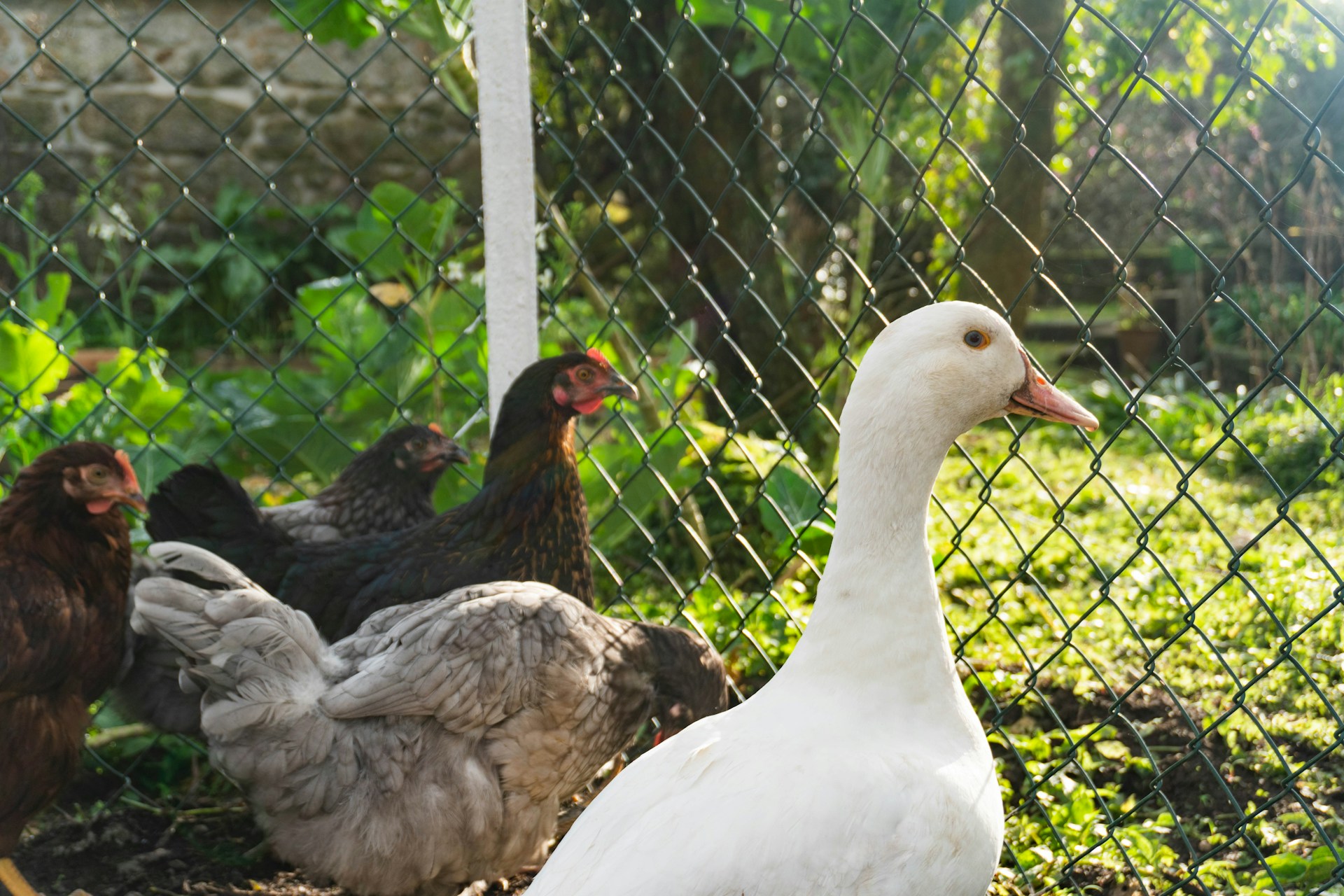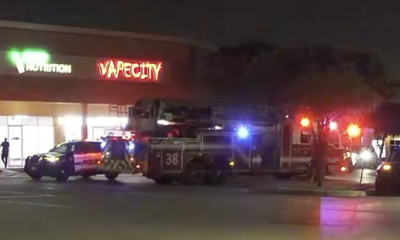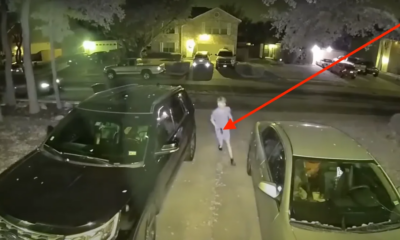Preparedness
Methods for Communicating During Power Grid Failure

When the power grid fails, which can happen for various reasons such as natural disasters, infrastructure issues, or even cyberattacks, it’s essential to have alternative communication methods in place. In these situations, traditional means of communication, like landlines and the internet, often become unavailable. As an experienced survivalist and someone who understands the importance of being prepared, I want to guide you through some effective communication methods you can rely on during a power grid failure.
1. Two-Way Radios
Two-way radios are a reliable option for short-range communication when other modes fail. These devices operate on specific frequencies, allowing individuals within a designated range to communicate with each other. There are a variety of two-way radios available on the market, ranging from basic walkie-talkies to more advanced models with longer ranges and additional features. It’s crucial to choose radios that have a long battery life and can be charged using alternative methods, like solar power or hand cranks.
2. Ham Radio Operators
In times of emergency or when traditional communication methods are down, ham radio operators become an invaluable resource. These amateur radio operators have licenses and access to a wide range of frequencies, enabling them to communicate over long distances. They often set up emergency communication networks and can provide vital updates, coordinate assistance, and relay messages between affected areas. Before a power grid failure occurs, it’s worth discovering if there’s a local amateur radio group nearby and understanding how to access their services.
3. Satellite Phones
Satellite phones are highly reliable during power grid failures because they rely on satellite networks instead of land-based infrastructure. These phones can often be connected to global networks, allowing you to communicate with others across different regions or even countries. Keep in mind that satellite phones require clear line-of-sight to the sky for effective communication, so be prepared to position yourself or the device accordingly.
4. Morse Code
Although Morse code might seem outdated, it remains a useful method of communication, especially in situations where technology fails. Learning Morse code is relatively simple, and it can be used with various signaling devices such as flashlights, whistles, or even tapping sounds. During a power grid failure, using Morse code to signal for help or communicate important information can prove to be a life-saving skill.
5. Message Carriers
In certain situations, when all other communication methods fail or are not available, relying on messengers or message carriers becomes vital. Establishing a network of trusted individuals who are willing to deliver messages between separated groups can be an effective way to relay information. It is essential to establish clear communication protocols and designated meeting points to ensure the smooth transfer of messages and maintain safety.
Being prepared for communication during a power grid failure is crucial for survival and maintaining contact with loved ones. Two-way radios, ham radio operators, satellite phones, Morse code, and message carriers are all viable communication methods when the traditional means fail. Remember, it’s not only about having the necessary tools but also knowing how to use them effectively. Prioritize learning and practicing these alternative communication methods to enhance your preparedness and increase your chances of staying connected when it matters most.
Stay safe and stay connected!

Preparedness
Chickens or Ducks Which Reigns Supreme on Your Homestead

When it comes to choosing the right poultry for your homestead, the decision often boils down to chickens or ducks. Both have their unique advantages and challenges, making the choice a personal one that depends on your specific needs and environment.
For those starting their journey into homesteading, both chickens and ducks offer a steady supply of eggs and meat. However, differences in egg production may influence your decision. Ducks generally outlay chickens, producing between 32 to 52 pounds of eggs annually, compared to chickens’ 22 to 34 pounds. The breed plays a significant role in these numbers, so research is crucial.
Ducks take a little longer to start laying eggs, beginning at 6-7 months, compared to chickens at 4-5 months. Nevertheless, ducks often have a longer productive lifespan. Duck eggs are not only larger, averaging 2.5 ounces compared to chicken eggs at 1.5 ounces, but they also boast higher fat, protein, cholesterol, and omega-3 levels.
Both birds are viable options for meat production. While chicken meat is more familiar to many, duck meat is a nutritious alternative enjoyed globally. The process of raising these birds for meat is similar, though some breeds are more suitable than others.
In terms of housing, chickens are more adaptable to confinement, making them a better choice for limited spaces. They require coops with roosting bars and nesting boxes. Ducks thrive in a free-range setting but still need a “duck house” for safety. Unlike chickens, ducks don’t need nesting boxes, as they create nests from available litter.
“Ducks tend to be messier than chickens,” which means more cleaning in their housing area. Regardless of your choice, sturdy fencing is crucial to protect them from predators. Ducks require less height in fencing since they aren’t strong fliers, but a roof is essential to guard against aerial threats.
Environmental conditions also play a role in your decision. While chickens need specific breeds to tolerate extreme climates, ducks are more adaptable to varying weather conditions. Ducks also manage well in wet environments, unlike chickens, which prefer drier settings.
Water is a significant consideration for ducks, as they need more than chickens. Ideally, a pond or a filled baby pool should be available for ducks to bathe and clear their nasal passages. “At a minimum, ducks need to be able to dunk their whole head into water on a daily basis.”
Dietary needs differ slightly between the two. Chickens require a controlled diet with measured feedings, whereas ducks, especially if free-range, forage for much of their food. They are excellent for natural pest control, consuming slugs, worms, and various insects.
Ducks generally exhibit stronger disease resistance and have fewer health problems, particularly in their youth. They are also quieter than chickens, which can be quite noisy, especially if roosters are present. Ducks only become loud when agitated, and male ducks, or drakes, emit a wheezing sound rather than a quack.
Temperament is another factor to consider. Ducks are typically friendlier and less aggressive than chickens, which are known to peck. Ducks are also easier to manage since they don’t fly or run as quickly.
Availability and cost can be deciding factors too. Chickens are widely accessible and affordable, whereas ducks might require ordering and are usually more expensive upfront. However, duck eggs can fetch a higher price if you plan to sell them.
Ultimately, the choice between chickens and ducks depends on your homestead’s specific needs and conditions. Weighing the pros and cons of each will help you make the best decision for your situation.
Let us know what you think, please share your thoughts in the comments below.
Preparedness
Master Urban Survival: Two Essential Preparedness Strategies

In the bustling environment of city life, emergencies can strike at any moment, often catching residents off guard. Whether it’s during your daily commute, while you’re at work, or even in the middle of the night, urban dwellers must be ready for anything. This is why it’s crucial to have multiple contingency plans.
“Have a Plan B, C, D and E,” to ensure you’re never left without options. This involves preparing emergency kits and planning several evacuation routes, both by car and on foot. When an emergency unfolds, having various strategies allows you to choose the best course of action under pressure.
Preparation doesn’t stop at planning; it extends to practice. If you anticipate needing to walk long distances, such as 30 miles out of the city with a heavy pack, physical readiness is key. Understanding the terrain firsthand is vital, as maps and apps may fail, particularly if cellular service is disrupted. In a true crisis, self-reliance on your experience and pre-established plans is paramount.
The second principle of urban preparedness involves embracing self-reliance. City life often provides easy access to modern conveniences, but these can vanish quickly in a crisis. “You won’t be able to rely on an Uber during a crisis,” and access to essentials like food, water, and power might be severely restricted.
Growing your own food in the city, contrary to popular belief, is entirely feasible. Vegetables can flourish in potted plants on rooftop gardens, and herbs like basil can thrive in sunny, southern-facing windows. Community gardens also offer urban garden plots for those willing to cultivate their own food supply. “Learning to grow your own food is an extremely valuable skill,” aiding not just in emergencies but also in potential resettlement scenarios.
Foraging is another valuable skill, often underestimated in urban settings. Despite misconceptions, cities are not entirely disconnected from nature. Local foraging groups can guide you on what is safe to pick and eat, allowing you to supplement your food supply without battling supermarket crowds.
Ultimately, the key to urban preparedness lies in continuous learning and self-reliance. In a crisis, relying on external help can be a lengthy wait, as thousands of others might be seeking the same assistance. By mastering these skills, you can navigate emergencies more confidently and independently.
In conclusion, embracing these two principles—having multiple plans and fostering self-reliance—will set you on the path to comprehensive urban preparedness. Avoid feeling overwhelmed by taking it step by step, ensuring that you and your loved ones are ready for whatever challenges city life might throw your way.
Let us know what you think, please share your thoughts in the comments below.
Preparedness
Nationwide Concealed Carry: A Game Changer for Gun Owners?

House Republicans are once again advocating for a nationwide policy that would allow concealed carry permits to be recognized across state lines. This initiative, known as the Constitutional Concealed Carry Reciprocity Act, aims to ensure that concealed carry permits are treated similarly to driver’s licenses, which are acknowledged by all states.
“There’s a lot of words there, but it’s a very common sense, simple piece of legislation,” explained Rep. Richard Hudson from North Carolina, the primary sponsor of the bill. Hudson emphasized the fundamental idea behind the proposal: “It says that every state should recognize the concealed carry permissions of the other states.”
The bill has garnered support from numerous Republican lawmakers and even one Democrat in the past. Proponents argue that it provides protection for law-abiding gun owners who might otherwise face legal issues simply for crossing state borders. Hudson articulated this concern by stating, “When law-abiding citizens are traveling, they shouldn’t be turned into criminals because they cross the state line.”
Former President Donald Trump has also expressed his endorsement of the bill. In a campaign video for 2024, Trump declared, “I will sign concealed carry reciprocity. Your Second Amendment does not end at the state line.”
This isn’t the first time such legislation has been introduced. A similar bill passed the House in 2017 but encountered obstacles in the Senate. Hudson remains optimistic about the current efforts, noting, “We got it through the Judiciary Committee, we got it through the House. But the Senate wouldn’t move it.” He further mentioned that Senate Majority Leader John Thune is committed to advancing the issue this time around.
Despite its support, the bill faces considerable opposition from gun safety advocates and certain state officials. Critics argue that a national reciprocity law could undermine individual states’ authority to enforce their own concealed carry standards, potentially diluting stricter gun regulations in states like New York and California.
“These lawmakers are pushing a federal mandate that would override carefully crafted gun safety laws, like New York’s,” said Everytown for Gun Safety in a statement. They expressed concern that such a mandate would force states to allow individuals from across the nation to carry concealed firearms without sufficient oversight.
Opponents also highlight significant variations in state laws regarding concealed carry. While some states have stringent measures preventing individuals with violent criminal records from carrying concealed weapons, others have more relaxed requirements. Critics argue that a nationwide policy could permit more dangerous individuals to legally carry firearms in states with stricter regulations.
Let us know what you think, please share your thoughts in the comments below.
-

 Tactical1 year ago
Tactical1 year ago70-Year-Old Fends Off Intruder with Lead-Powered Message
-

 Tactical1 year ago
Tactical1 year agoVape Shop Employee Confronts Armed Crooks, Sends Them Running
-

 Preparedness9 months ago
Preparedness9 months agoEx-Ballerina’s Guilty Verdict Sends Tremors Through Gun-Owner Community
-

 Preparedness7 months ago
Preparedness7 months agoGood Samaritan Saves Trooper in Harrowing Interstate Confrontation
-

 Tactical1 year ago
Tactical1 year agoMidnight SUV Theft Interrupted by Armed Homeowner’s Retaliation
-

 Survival Stories2 years ago
Survival Stories2 years agoEmily’s 30-Day Experience of Being Stranded on a Desert Island
-

 Preparedness7 months ago
Preparedness7 months agoArizona Engineer’s Headless Body Found in Desert: Friend Charged
-

 Preparedness7 months ago
Preparedness7 months agoBoy Saves Dad from Bear Attack with One Perfect Shot